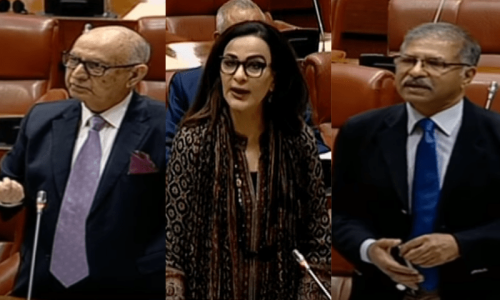PAKISTAN’S Population Census Organisation’s website has a population clock on the home page which gave the country’s population as 179,850,379 on Tuesday — an average increase of 9,700 every day.
According to the National Institute of Population Studies (NIPS), Islamabad, the country’s population was 133.3 million in 1998 when the last census was held. This comes to a whopping increase of 34.8 per cent in 13 years (2.6 per cent per annum) which surprisingly has gone unnoticed. In effect we have slipped down from the two per cent (NIPS) or 1.8 per cent (World Bank) figure we were given as the growth rate for 2010.
We have regressed to the 1980s and this has phenomenal significance for the country’s economy, politics, quality of human life, law and order, in fact for its very survival.
If proof were needed of the apathy that marks people’s attitudes towards their own wellbeing, this is it. Not that everyone is uniformly indifferent. After all the marriage age of girls has gone up somewhat, female enrolment in school has increased and there is a remarkable growth in female awareness about the importance of small families and contraceptives. But the family size has not decreased and contraceptive prevalence remains dismally low.
We know little about the dynamics of family planning. It is assumed that women are irrational about motherhood. Hence new terms are coined to appeal to them to be sensible. What was simply family planning is now the Healthy Timing and Spacing of Pregnancies programme to persuade them to have a gap of three years between their children to ensure healthy babies. That has hardly helped. What women want are the services. They are not empowered enough to get them on their own.
Take the case of Yasmin who is 29 years old and lives under the poverty line as defined by development economists. She was married at 21 (her eldest sister was married at 12). She has attended school and is quite fluent in reading and writing. Yasmin is expecting her fifth baby. She has experimented with various contraceptives and seems to be quite ill-informed about them all.
At one stage she even wanted to go in for sterilisation but was advised against it given her youth at the time. Yasmin says her husband has no idea where babies come from.
This is a typical case of lack of male participation in women’s reproductive health which is confirmed by several reports. With a conservative and patriarchal society a large number of men don’t feel involved in the business of family planning. As such policymakers take the easy way out by focusing on female-centric population strategies. Small wonder that according to the Pakistan Demographic and Health Survey of 2007 (the last reliable data available) of the total of 5.1 million modern contraceptive users only 1.7 million use condoms and the number of male sterilisation is too low to merit a mention in the statistical data released..
Although Research and Development Solutions (RDS), a USAID-supported programme that briefed me on this, describes female sterilisation as “safe”, “simple”, “permanent” and the “commonest” of the modern contraceptive measures adopted in Pakistan (being 38 per cent of the mix), it also points out its weaknesses. The analysis also notes that women who opt for it are nearing the age of 40 and already have had six children. That is why it has had so little impact on our population growth rate.
Policymakers recognise the link between family size and women’s reproductive health as well as the national economy. Women have gained considerable awareness about contraception. But this has not translated into a lowering of the population growth rate. According to RDS six million women constitute what is called the unmet need in Pakistan — that is women who want to limit their family size but can’t.
It is this phenomenon that needs to be looked into. The problem lies with the delivery of services and the failure of health counselling. Women are not empowered enough to find a suitable contraceptive on their own initiative.
Dr Sadiqa Jafarey, chairperson of the Committee for Maternal and Neonatal Health, confirms that the Achilles’ heel of our family planning programme is counselling. It is the duty of the counsellor to comprehensively advise women and their partners about all contraceptive methods available and then offer them the choice. NGO population workers have confirmed that mobilisers and motivators in the public sector have become lax and hardly any counselling is taking place.
Dr Sadiqa Jafarey, who has worked for decades in a government hospital, feels that women are now ready to accept birth control. They, however, need intensive counselling. She gives the example of the Post-Partum Intra-Uterine Contraceptive Device programme her committee has launched in two major hospitals of Karachi. Pregnant women who come for check-ups are counselled intensively throughout the pre-natal period. As such they readily accept the IUD inserted within a few hours of the birth of a baby. That saves them repeated visits to a health facility.
Here is some food for thought. Why are men not being involved in the population programme? Even if most of them do not share the responsibility of raising the children their wives give birth to, they can at least be told of the role they are playing in devastating the country. Many of Pakistan’s horrendous problems today can be traced to its shocking birth rate — the highest in the group of the six most populous countries of the world to which we belong.
www.zubeidamustafa.com











































